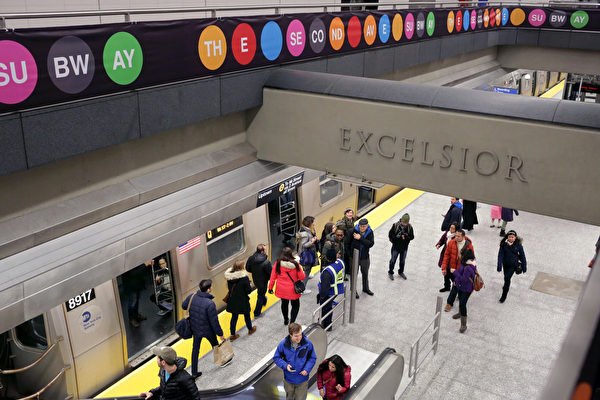New York Metropolitan Transportation Authority (MTA) officials confirmed on June 18 that the construction of the Second Avenue subway extension to East Harlem at 125th Street in Manhattan has been completely halted due to Governor Hochul’s earlier decision to suspend the congestion pricing plan.
At a press conference that day, MTA’s Chief Development Officer, Jamie Torres-Springer, stated that since Governor Hochul’s decision on June 5 to halt the congestion pricing plan, the preliminary work for the extension of the Second Avenue subway to East Harlem at 125th Street, including a $182 million public infrastructure relocation project, has come to a complete stop in terms of excavation work. Additionally, many other major projects will also be unable to move forward because without congestion pricing, MTA can only focus on essential maintenance work to keep the system operational. Just a few hours before Torres-Springer made this announcement, Governor Hochul had expressed her continued hope to secure funding for the completion of the Second Avenue subway extension project as planned.
The Second Avenue subway extension was a key project funded by congestion pricing. MTA had planned to provide $4.3 billion for this $7.7 billion project through congestion pricing, with an additional $3.4 billion in federal subsidies. The first phase of the Second Avenue subway project was completed in 2017, with stations at 72nd Street, 86th Street, and 96th Street. The second phase was originally set to include additional stations at 106th Street, 116th Street, and 125th Street.
The suspension of the congestion pricing plan has raised concerns about the future of infrastructure projects in New York City and the financial stability of the MTA. Without the anticipated revenue from congestion pricing, critical projects like the Second Avenue subway extension face uncertain futures. This setback reflects the challenges of funding large-scale transportation initiatives and underscores the importance of sustainable financing models for public infrastructure developments. The impact of this decision on commuters, urban development, and transportation accessibility in New York City remains to be seen, as stakeholders assess alternative funding options and potential implications for ongoing and future transportation projects.
The suspension of the Second Avenue subway extension construction serves as a reminder of the interplay between political decisions, funding mechanisms, and infrastructure development. As discussions continue on how to move forward with essential transportation projects, the broader implications of halting such initiatives underscore the need for strategic planning, transparent communication, and collaborative decision-making to address the complex challenges facing urban transportation systems. The fate of the Second Avenue subway extension project highlights the delicate balance between government priorities, public investment, and the long-term vision for sustainable and efficient transportation networks in major metropolitan areas like New York City.

